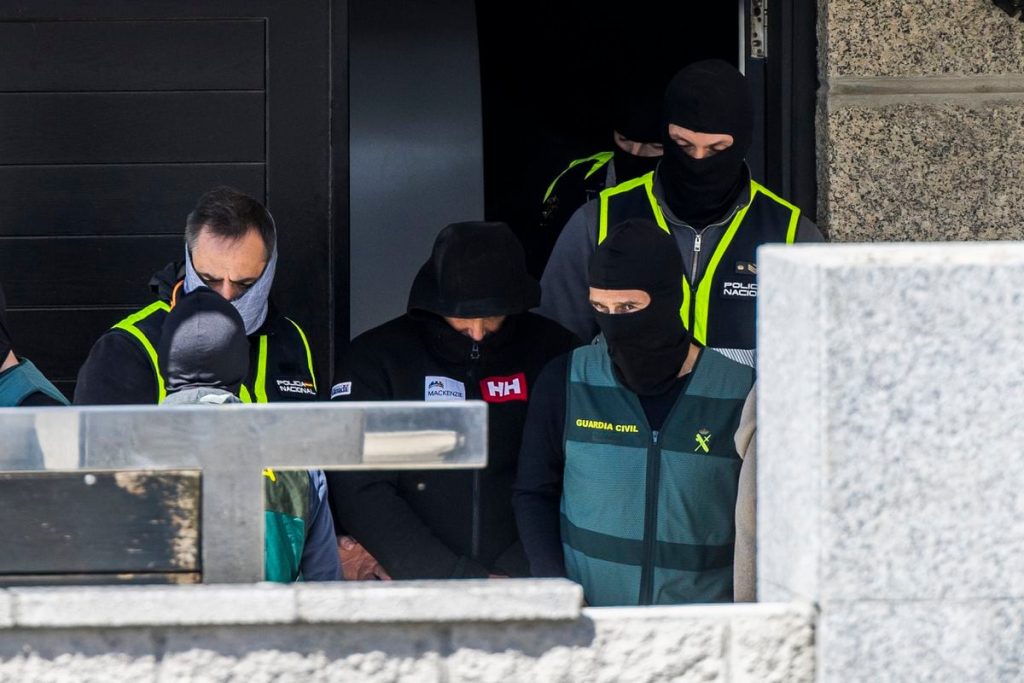In the history of drug trafficking, not all are caught, but for the police, it is only a matter of time, sometimes many years of waiting. Eventually, greed or overconfidence catches up with those who seem untouchable, and few drug traffickers have survived in this business without ending up in jail. Such is the case of Juan Vidal Padín, also known as El Burro, who has been involved in cocaine smuggling in the Arousa estuary for almost two decades without being caught in any raids. He is now the biggest challenge for law enforcement on the west coast. The businessman, with no previous criminal record, was arrested for the first time on Tuesday, but was released by the judge leading the investigation where he is suspected of organizing the cocaine shipment from the Poseidon, the second narco-submarine seized in Galicia from South America.
Amid a large deployment of anti-drug agents, Juan Vidal, 54 years old, spent 24 hours handcuffed and refused to testify at the Civil Guard headquarters in Pontevedra, only saying he would testify in court. The judge overseeing the joint operation of the Central Drug Unit, ECO and EDOA units of the Civil Guard, and the Customs Surveillance Service, released him along with five other alleged accomplices of the suspected drug trafficker. The magistrate ordered him to appear in court every two weeks as a suspect in a smuggling case related to four boats seized in one of his companies.
Despite a year of investigations to reconstruct the arrival of the Poseidon in Galicia and its connection to sightings of several speedboats with infrared cameras days before the narco-submarine appeared adrift on March 11 of last year, all police efforts have been unsuccessful in implicating El Burro in this transoceanic operation, at least for now. The police hypothesis is that the pilots of the speedboats abandoned them after being alerted by the radars of the Integrated External Surveillance System (SIVE) installed in strategic points in the Arousa estuary. They were unable to pick up both speedboats’ cargo at sea, so Vidal ordered the crew of the narco-submarine to navigate into the estuary in a long nighttime voyage to unload the shipment on the beach near Náutica Vidal, the business owned by Vidal.
After hours of searching the company’s warehouses with trained dogs, the agents found no trace of narcotics. Additionally, no evidence linking Vidal or the other detainees to the Poseidon voyage was found. This false alarm surrounding El Burro has only increased the legendary status of this elusive character who has managed to live under the constant suspicion of being a drug trafficker while simultaneously maintaining a low profile as a multifaceted businessman with luxury nautical ventures, real estate assets, and fishing and shellfish products sales.
Unlike other historic drug trafficking leaders who eventually ended up in prison due to arrogance or betrayal, El Burro has managed to evade law enforcement, surrounded by loyal lieutenants and maintaining absolute secrecy in his business dealings. This entrepreneur, who challenged the police with a narco-submarine, is now being investigated for smuggling and faces a thorough examination by the Tax Agency for possible money laundering. Juan Manuel Vidal and his brother Santiago, who were known in police circles as Los Burros, formed a business conglomerate with over 30 companies in the past decade, raising suspicions in the drug trafficking underworld and in legal circles.
The investigation into Vidal’s connections with other prominent businessmen, including Jorge Dorribo, led to the uncovering of a major fraud ring that involved subventions, bribery, and influence peddling. This network, known as Operation Champion, became the largest case of subsidy fraud, bribery, and trafficking of influence in Galicia. Despite the involvement of high-profile figures such as former Minister José Blanco, the case eventually fizzled out due to lack of evidence. The close relationship between Vidal and Dorribo revealed through wiretaps exposed their dealings in loan management and real estate, as well as their connections to public institutions for grants and subventions.


